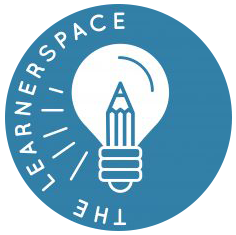The ineffably paradoxical world of education seems to be perpetually caught up amongst what, by now, is a state of global confusion, with multiple trends that seemingly coexist in the collective consciousness of educators, albeit, in many cases, being contradictory in and of themselves. Thus, us poor practitioners have to deal with a multiplicity of stimuli that call us to, simultaneously and almost schizophrenically, open our classrooms to a global world whilst struggling to come to a sense of identity, leverage technology for positive disruption despite the frenetic pace of change that challenges our perception of what is real, prepare students for a future that is intrinsically uncertain and jobs that don’t exist yet, foster creativity and higher order skills but are still being largely assessed on our test scores, and a long litany of tendencies that are as pervasive as they can prove, eventually, to be ephemeral, despite their lingering unsettling effect.
But there is one such trend that seems to be above discussion, a sort of overarching principle that is unarguable, and that is refers to the need to place students at the center. This is an idea that, and its various incarnations, seems to have taken decisive hold in the elusive collective consciousness of education. In effect, in a world where learning has become ubiquitous both in space and time, the fact that every person will be able to learn for their entire life, regardless of whether they are enrolled in some instance of formal learning, looms large as a defining aspect of the learning landscape.
In that context, to express it in one of the myriad of clichés that abound regarding the trend, a student centered school makes sense in that one of the dimensions of schooling should be to prepare students to learn for their entire lives, and thus be both aware and responsible about their own learning process.
As soon as we think about it, it becomes self-evident that schools are not structured that way, quite the opposite, despite their best intentions and the multitude of efforts in that respect, students are still largely passive recipients of their education and spoonfed contents, and, at best, may choose amongst them, without actually becoming truly protagonists of their learning. And, like with many of the trends that are decisive in terms of the future of schooling, placing students at the center of their education is easier said than done.
One of the salient aspects that are common to any change initiatives in education is that we need to shed away our preconceptions about linear processes and that any transformation will entail a logical concatenated detailed sequence of steps that arrives at the desired outcomes following a timeline. When trying to shift our pedagogy more towards students, the same applies, and many related initiatives have become ineffective because they are still conceived with the outdated mindset of rigorous planning. Education is, as life, more organic than linear, and any attempt at reassessing our practice should be approached by targeting the multiple dimensions of what is a complex, dynamic and unstable scenario, and should be treated as such.
In that respect, and being careful not to be prescriptive in any recommendations, the following are some of the dimensions entailed in a student centered school:
- Awareness. An anonymous ancient saying goes by “unawareness is the root of all evil”, and nothing can be further from the truth when it comes to learning. Perhaps the most fundamental dimension about becoming autonomous learners is related to our own awareness about the learning process. One cannot learn if we are unable to discern what needs to be learned, what our shortcomings are, how to bridge the gap between what we know and what we should learn to, for example, solve a problem, and, in general, assess, as objectively as possible, our general status as a learner. What does this entail in real life in schools? That students need to learn, from a very early age, to be aware of their own learning process, and this can be accomplished, lo and behold, by the much maligned self-evaluation process, as well as by other techniques such as starting new topics by tapping into previous knowledge, initiating with a whole class reflection on what needs to be learned, involving students in unit planning, and other initiatives that are simple and don’t require a major overhaul of the system.
- Tools for learning. Another clear cut dimension for lifelong learning is acquiring the tools to be able to successfully learn. This amounts to being able to discern and filter contents on the Internet, become proficient users of search engines – for example, becoming power users of Google and knowing its multiple features and services – learning about statistics and data tools, developing a sort of deeply ingrained intuition regarding the validity of contents on the Internet, and, in general, being proficient in the tools required to find information. Again, this simply requires that schools focus on some skills that don’t just come out of magical thinking. Learning how to use Google beyond it being a black box is of paramount importance, almost an alphabetization skill. The much vaunted critical thinking as a desired skill in schools also comes into place, with needed pedagogy and interventions that specifically target the development of a healthy skepticism and critical insights regarding consumption of information, including multimedia.
- Motivation. Perhaps the most difficult dimension of fostering a student centered model of learning, since it is clearly one of those aspects of learning that is “caught, not taught”, none of the other dimensions make any sense unless students remain motivated to become learners. This, luckily but also unfortunately, cannot be accomplished in schools unless the adults in the building are truly motivated themselves and embody lifelong learning as a testimonial trait that students need to be inspired by. So, in this case, no strategies or techniques can accomplish this objective, much rather, it is the prevailing learning mindset amongst the faculty, all the way to the top, that will either make or break this essential dimension of a student centered school.
All in all, creating a student centered school goes far beyond providing cosmetic options for students to choose at a later stage in the curriculum. If we truly want to prepare our students to become future learners, we need to, essentially, redefine what we are accountable for and rewrite our success stories. Schools need to accept that they are more accountable for engendering lifelong learners than they are for anything else, and that, when it comes to opportunity cost, the missing link in education, student learning should be at the forefront of any decisions.
At the end of the day, the whole proposition is deceptively simple, but incommensurably difficult to accomplish. Despite what may be carefully laid out plans, strategies, initiatives and projects, the truly transformative dimension of the school, the one that will decisively impact student learning, awareness and mindset, is that the adults are able to rethink themselves as learners with their students, and behave consistently to that deeply seated belief. A student centered school is, paradoxically, not different from a teacher centered school. The catch is, however, that teachers also become students themselves.
The Learnerspace has developed an experiential workshop for staff at a school to reflect and learn about how to develop a student centered initiative, as an emblematic first step towards transforming school culture. Click here to learn more about The Learnerspace Project.
Similarly, whole child education, which, by now, has become widely accepted to be a desirable goal for school transformation, can also be related to a similar process for teachers. Click here for the book “The Whole Teacher: A One-Way Journey to Rediscovering Joy and Passion in Teaching”, which tackles the unexplored issue of how teachers can, themselves, redefine their sense of purpose towards a whole child education.

